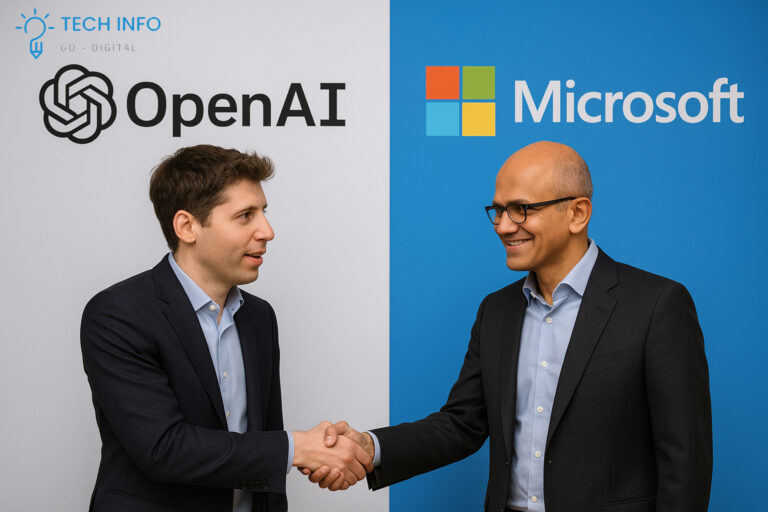Table of Contents
ToggleA New Chapter for Capitalism: What OpenAI’s For-Profit Shift with Microsoft’s Blessing Really Means
In the high-stakes world of artificial intelligence, where breakthroughs are measured in months and ethical dilemmas loom as large as financial ones, a quiet but seismic shift has occurred. OpenAI, the research organization founded as a non-profit with the lofty mission to ensure artificial general intelligence (AGI) benefits all of humanity, has secured a crucial endorsement from its most powerful partner. Microsoft, having invested over $13 billion, has blessed OpenAI’s transition to a for-profit arm, a move that fundamentally reshapes the landscape of AI development.
This isn’t just a corporate restructuring; it’s a grand experiment in 21st-century capitalism. It raises profound questions: Can a company truly balance a fiduciary duty to shareholders with a founding charter dedicated to humanity’s well-being? Does Microsoft’s blessing signal a harmonious alignment of visions, or is it the inevitable absorption of an idealistic startup into the corporate machine? To understand this, we must look beyond the headlines and into the novel structure and the immense pressures that precipitated this change.
The Original Dilemma: Idealism vs. The Insatiable Appetite of AI
OpenAI began in 2015 as a pure non-profit. Its goal was noble and necessary: to act as a counterweight to the massive, proprietary AI efforts of Google, Meta, and other tech giants. The fear was that AGI, a form of AI that surpasses human intelligence, if developed in a purely profit-driven environment, could be misused or lead to catastrophic outcomes. The non-profit model was designed to keep research open, safe, and untainted by the need to generate quarterly returns.
However, the researchers at OpenAI quickly ran into a hard truth: idealism is expensive. The computational power required to train state-of-the-art models like GPT-3 and DALL-E is astronomical. We’re talking about costs running into tens of millions of dollars for a single training run. A traditional non-profit, reliant on grants and donations, simply could not compete with the near-limitless resources of Big Tech. To fulfill its mission, OpenAI needed to build the most powerful AI systems on the planet, and that required capital on a scale only the world’s largest corporations could provide.
This led to the creation of OpenAI LP in 2019, a “capped-profit” subsidiary governed by the original non-profit’s board. This hybrid model was a masterpiece of legal and philosophical engineering. It allowed OpenAI to take on massive investments—most significantly from Microsoft—while theoretically remaining bound to its charter. The “cap” meant that investors’ returns were limited to a certain multiple (the specifics remain private), with any profits beyond that flowing back to the non-profit to further its mission. It was a bet that you could have your cake and eat it too: harness the power of capital without being enslaved by it.
Microsoft’s “Blessing”: Strategic Genius or Necessary Evolution?
When we say Microsoft has “blessed” this transition, it’s crucial to understand what that means. Microsoft didn’t just agree; it was likely a key architect and driving force. Their investment gave them exclusive licensing rights to OpenAI’s technology, powering a massive suite of products from Azure AI services to the Copilot ecosystem integrated across Windows, Office, and GitHub.
From Microsoft’s perspective, the shift to a more conventional for-profit structure isn’t just acceptable; it’s highly desirable. It creates a clearer, more stable, and more scalable investment framework. It signals that OpenAI is maturing from a moonshot research lab into a formidable commercial entity that can deliver sustained value and integrate seamlessly into the global economy. This “blessing” is a vote of confidence in OpenAI’s ability to execute as a business, not just as a research institute.
For OpenAI, Microsoft’s support is the ultimate validation of its precarious balancing act. It means their primary benefactor, a trillion-dollar corporation, is formally aligned with their dual mission. It provides the stability needed to continue the expensive, long-term research into AGI, secure in the knowledge that their funding partner is committed for the long haul.
The Tightrope Walk: Governance and the Specter of Conflict
However, this blessing does not erase the inherent tensions. It magnifies them. The entire model now hinges on one thing: governance. The non-profit’s board remains the ultimate arbiter, tasked with a near-impossible duty. They must oversee a commercial juggernaut valued at over $80 billion, ensuring it doesn’t prioritize a lucrative product launch over thorough safety testing or withhold a general-purpose technology that could be immensely profitable but also potentially dangerous if widely deployed.
The recent, albeit temporary, ousting of CEO Sam Altman laid this tension bare. Reports suggested the previous board’s concerns were partly about the breakneck speed of commercialization potentially outstripping safety considerations. Microsoft, as a major stakeholder with significant commercial interests, found itself thrust into the drama, ultimately helping to orchestrate Altman’s return and a restructuring of the board.
This event was a stress test for the model, and it showed both its fragility and its resilience. It proved that commercial pressures are immense and will constantly challenge the non-profit’s oversight. Yet, it also proved that the governance structure, however messy, has teeth. The mission is not just a forgotten footnote on a website; it is an active, powerful force that can, and did, intervene.
The Precedent for the Future
OpenAI’s transition, blessed by its corporate partner, is being watched closely by the entire tech world and beyond. It is pioneering a new template for how to tackle humanity’s “moonshot” challenges.
This model acknowledges that solving the biggest problems—whether it’s curing diseases, addressing climate change, or developing safe AGI—requires two things that are often at odds: the boundless ambition and ethical guardrails of a mission-driven organization, and the unprecedented scale and efficiency of corporate capital.
The success or failure of this experiment will have ramifications far beyond AI. It challenges the long-held notion that profit and purpose are fundamentally incompatible. It suggests that a new hybrid model of operation is not only possible but necessary to navigate the complexities of the modern world.
The road ahead for OpenAI is fraught with peril. They must continue to innovate at a blistering pace against well-funded, purely profit-driven competitors. They must navigate the evolving and often fractious regulatory landscape surrounding AI. Most importantly, they must constantly vigilantly guard their original mission, ensuring that the pursuit of profit remains a means to an end—the benefit of all humanity—and never becomes the end itself.
Microsoft’s blessing is not an absolution from this responsibility; it is the fuel that makes the journey possible. Now, the world watches to see if this unique vessel, built for both speed and stability, can successfully navigate the uncharted and turbulent waters ahead.





